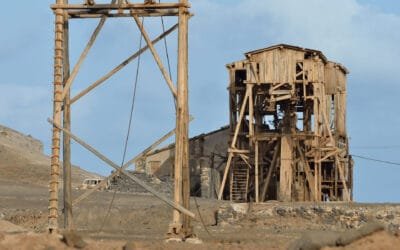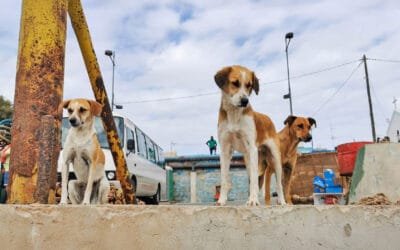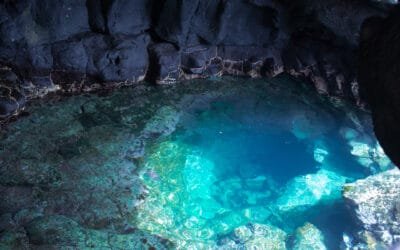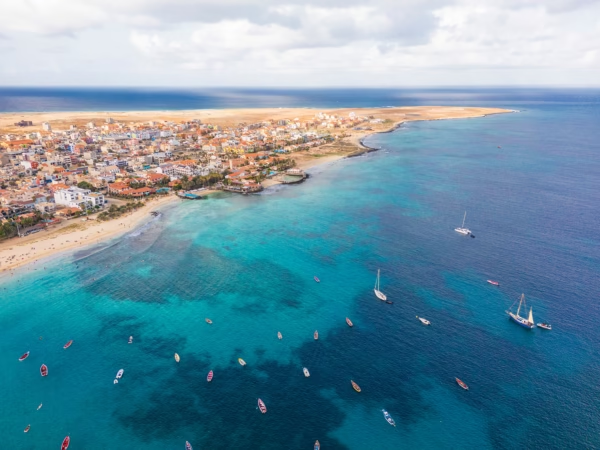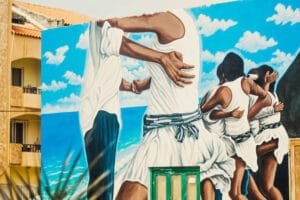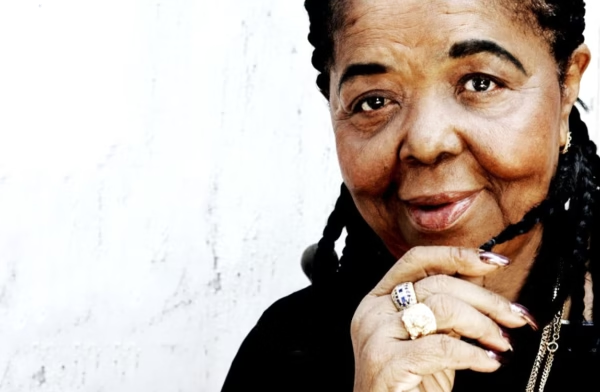Strange Sculpture on Rua 15 de Agosto in Santa Maria
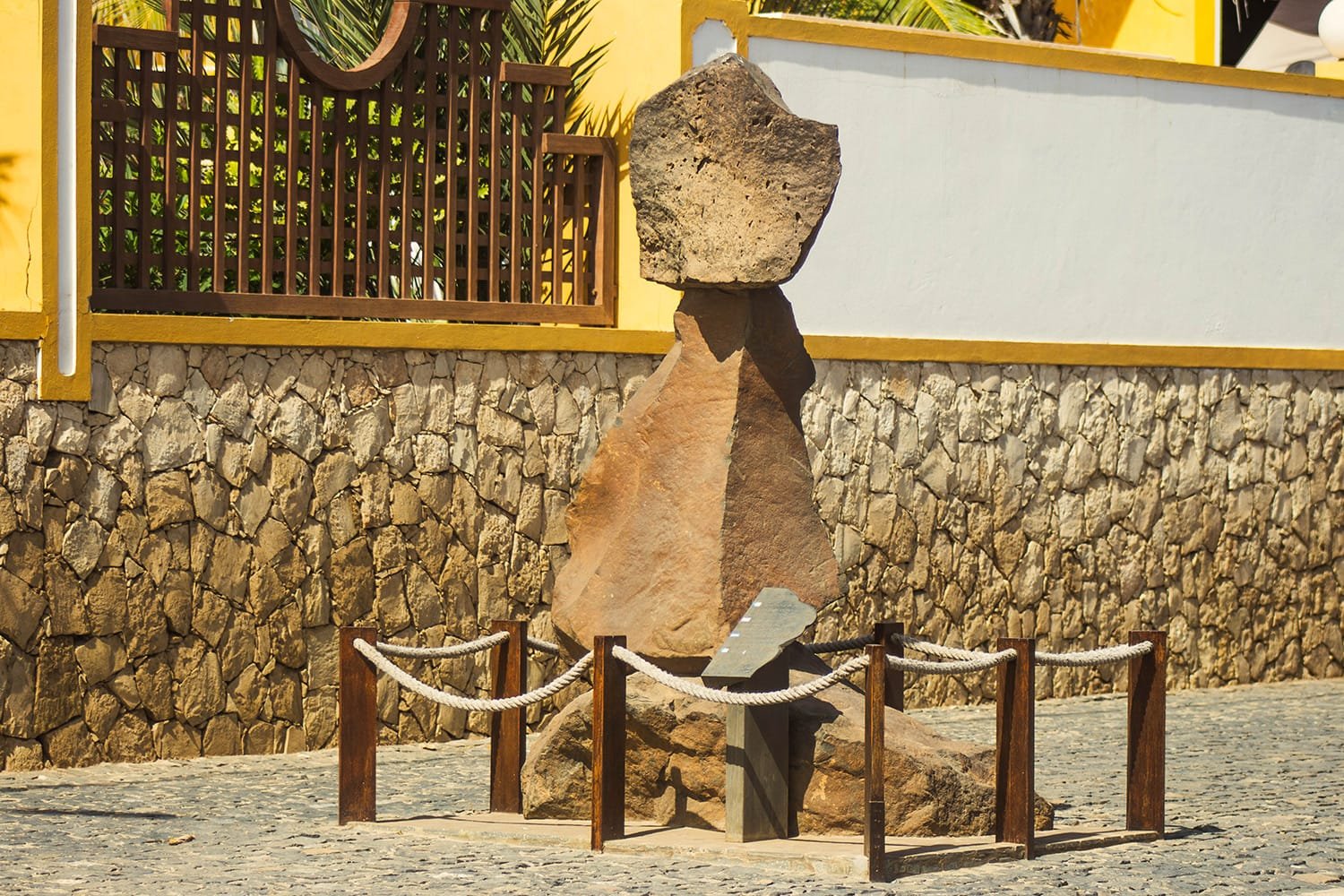
In the centre of Santa Maria, at a modest junction along Rua 15 de Agosto, there is a stone sculpture that most people walk past without a second glance. It has no plaque from the municipality, no protective canopy, and no explanatory signage. Just four wooden stakes, a piece of rope, and a stone, carved, angled, and placed.
The inscription, etched into its surface in four languages, reads:
“From here I see the beach of the President. And you?”
The signature — Giovanni Mandole Jr., dated 12 September 2015 — offers the only clue to its origin. No other information is publicly available. There is no known biography of the sculptor. No local guidebook explains the meaning. No cultural directory includes it.
And yet, the piece has remained in place for nearly a decade, quietly and persistently, part of the city’s evolving public landscape.
The Artist and the Installation
Giovanni Mandole Jr, whose name appears on the plinth, remains a shadowy figure in public records. Whether he is a local artisan or an itinerant sculptor is yet to be confirmed. The multilingual plaque suggests an intention to engage both residents and tourists. The artwork acts as a conversational prompt, urging passers-by to consider their perspective on Santa Maria’s evolving landscape.
Installed in 2015, its placement aligns with broader artistic efforts in Santa Maria. One of them is the Arte d’Zona initiative. It’s a local urban art project that transformed neglected streets into open-air galleries of murals and installations aimed at enriching coastal life for locals and visitors alike.
Sculpture’s Significance in the Streetscape
Rua 15 de Agosto is one of Santa Maria’s primary promenades, lined with cafés, boutiques, lodgings, and punctuated by shade trees and public benches. The sculpture stands as a subtle yet powerful counterpoint to the sea-facing bustle that surrounds it, challenging viewers to look both inward and outward, to reflect on personal vantage points and collective identity.
Encircled by ropes and wooden posts, it commands a quiet respect, much like the salt ponds and fishing pier that anchor Santa Maria’s history. As a stone monolith in a town built on salt, surf, and tourism, the artefact builds a third narrative—an artistic bridge between the island’s past and its contemporary civic life.
Meaning of the Sculpture: Invitation, Viewpoint, and Place
The plaque’s question — “From here I see the beach of the President, and you?” — can be read literally: Santa Maria’s seafront and pier are visible from this vantage point. But it also acts as a metaphor. Who is the “President”? A local dignitary, Cape Verde’s leader, or the piece’s “author” of meaning? And who is the “you”? Perhaps underlining that all who pass through these streets carry their gaze, curiosities, and expectations.
It invites pedestrians both to see and to be seen. To notice the transformation of Santa Maria’s shoreline and to ponder their relationship with it.
Art in Open Air: Santa Maria’s Cultural Canvas
This sculpture is not an isolated artwork — it is part of a growing art narrative across Santa Maria. Over recent years, local and visiting artists have enriched the town with vibrant murals, sculptures, and installations that blend tradition with contemporary expression. The Arte d’Zona initiative, fuelled in part by cultural practitioners like Arianna Casaburo, has brought new visibility and pride to overlooked corners of the town.
Visitors now encounter Santa Maria as a living gallery: street art, sculptural curios, and communal installations form unexpected moments of wonder next to cafés, guesthouses, and sandy lanes.
Art in Open Air: Santa Maria’s Cultural Canvas
This sculpture is not an isolated artwork — it is part of a growing art narrative across Santa Maria. Over recent years, local and visiting artists have enriched the town with vibrant murals, sculptures, and installations that blend tradition with contemporary expression. The Arte d’Zona initiative, fuelled in part by cultural practitioners like Arianna Casaburo, has brought new visibility and pride to overlooked corners of the town.
Visitors now encounter Santa Maria as a living gallery: street art, sculptural curios, and communal installations form unexpected moments of wonder next to cafés, guesthouses, and sandy lanes.
